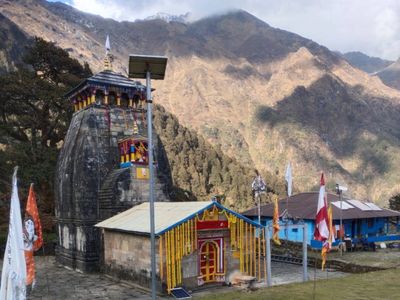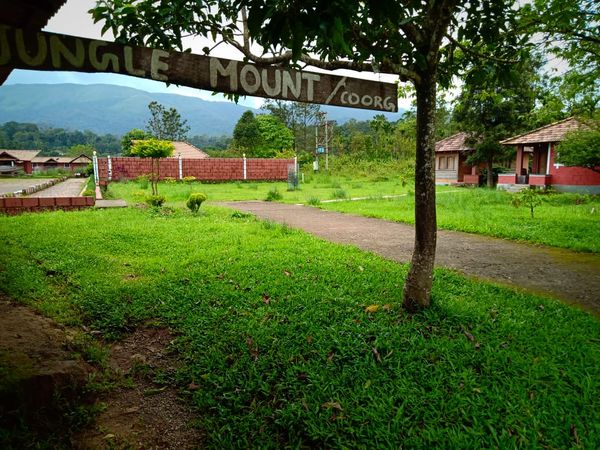Panch Kedar and the Pandavas: A Tale of Repentance and Devotion
 Mountains Curve
01 Mar, 2025
12 mins read
454
Mountains Curve
01 Mar, 2025
12 mins read
454

The Himalayas, a region steeped in mythological stories and spiritual significance, have long been a sacred abode for gods and saints. Among the many revered shrines scattered across Uttarakhand, the Panch Kedar Yatra holds a place of paramount importance. This yatra, or pilgrimage, takes devotees on an extraordinary journey to five ancient temples, each dedicated to Lord Shiva. These temples, located in the Garhwal region of Uttarakhand, are not just places of worship but are deeply entwined with the stories of the great Pandavas from the epic Mahabharata.
In this article, we will explore the mythological significance of the Panch Kedar trek, the Pandavas quest for atonement, and the spiritual journey that unfolds through the five sacred temples.
The Panch Kedar Trek: A Spiritual Journey Through Five Sacred Temples
The Panch Kedar Yatra is an incredible trek that takes you through five beautiful and remote Shiva temples scattered across the Garhwal region of Uttarakhand. The trek itself, stretching over about 95 kilometers (59 miles), is as challenging as it is awe-inspiring. The Panch Kedar trek provides an unparalleled experience for trekkers and devotees alike, offering both a physical adventure through the Himalayas and a spiritual journey through sacred lands. Let's take a closer look at each of the temples you will visit on this journey.
1. Kalpeshwar: The Hair of Lord Shiva
The Kalpeshwar Temple is the first temple on the Panch Kedar trek. Located in a picturesque valley surrounded by snow-capped peaks, Kalpeshwar is considered the site where Lord Shiva’s matted hair (jata) appeared. The temple is situated at an altitude of about 2,200 meters and is accessible by a drive from Helang to Kalsi Village, followed by a short trek.
The temple is renowned for its tranquility and its location in a beautiful, remote part of the Himalayas. The surrounding landscape of Nanda Ghunti and Trishul peaks enhances the serene ambiance of Kalpeshwar, making it a perfect place for reflection and prayer. The atmosphere here feels timeless, with the cool mountain breeze and the gentle sound of the river creating a meditative setting.
2. Rudranath: The Face of Lord Shiva
Next, trekkers move on to Rudranath, the temple that represents the face of Lord Shiva. Located at an altitude of 2,286 meters, Rudranath can be accessed from the village of Sagar, a charming village in the Garhwal region. The trek to Rudranath is a challenging one, taking you through dense forests, alpine meadows, and remote villages. Along the way, trekkers are treated to awe-inspiring views of the Himalayan peaks and the serene beauty of nature.
The Rudranath temple stands in a peaceful meadow surrounded by towering peaks, and its spiritual ambiance is heightened by the clear blue skies and the chanting of prayers. Rudranath is one of the most sacred temples in the Panch Kedar Yatra, and the beauty of its surroundings creates a sense of divine connection.
3. Tungnath: The Arms of Lord Shiva
Tungnath is the highest of the five temples in the Panch Kedar trek and is located at a staggering 3,680 meters. The trek to Tungnath begins from Chopta, known as “Mini Switzerland of India†for its breathtaking meadows and vibrant landscapes. The path leading up to Tungnath is relatively short but steep, taking you through lush rhododendron forests and offering spectacular views of the surrounding Himalayan peaks.
At the summit, the Tungnath temple stands as a testimony to the unwavering devotion of pilgrims. It is one of the oldest temples dedicated to Lord Shiva and boasts of its ancient stone architecture. From here, you can continue your trek to Chandrashila, a peak that provides panoramic views of some of the highest peaks in the Himalayas, including Nanda Devi, Trishul, and Chaukhamba.
4. Madhyamaheshwar: The Navel of Lord Shiva
Madhyamaheshwar is the fourth temple in the Panch Kedar trek and represents the navel of Lord Shiva. The trek to Madhyamaheshwar begins from the village of Ransi, passing through dense forests and charming meadows. The journey is relatively serene, with the soft rustling of leaves and the occasional sighting of Himalayan wildlife adding to the charm.
As you ascend toward Budha Madhyamaheshwar, the views of the Kedarnath and Chaukhamba peaks become increasingly mesmerizing. The temple, located at an altitude of 3,497 meters, is surrounded by lush meadows and offers a peaceful setting for prayer and contemplation.
5. Kedarnath: The Hump of Lord Shiva
Kedarnath, located at an altitude of 3,584 meters, is the most famous and revered of all the Panch Kedar temples. Situated at the base of the Kedarnath Peak, the temple is dedicated to the hump of Lord Shiva. The Kedarnath temple is part of the Char Dham Yatra and is also one of the twelve Jyotirlingas of Lord Shiva.
The trek to Kedarnath begins at Gaurikund and spans a challenging 16 kilometers, taking you through steep inclines, dense forests, and gushing waterfalls. As you approach the temple, the towering Kedarnath Peak and the Kedar Dome come into view, adding to the awe-inspiring beauty of the surroundings. The Kedarnath temple, built with massive stone slabs, has stood the test of time and continues to be a symbol of Lord Shiva’s eternal presence.
The Mythological Tale Behind Panch Kedar
The tale of the Panch Kedar Yatra is rooted in one of the most famous epics of Hindu mythology, the Mahabharata. According to the legend, after the brutal Kurukshetra War, the Pandavas, the heroic brothers who were at the center of the epic, sought to atone for the bloodshed and sins incurred during the war. They were advised to seek the blessings of Lord Shiva, the destroyer of evil and the god of transformation and regeneration, in the sacred mountains of Uttarakhand.
However, Lord Shiva, disapproving of the Pandavas’ actions, decided to elude them. Transforming himself into a buffalo, he fled to the high Himalayan peaks to escape their pursuit. Bhima, the strongest and most valiant of the Pandavas, chased after Shiva and eventually discovered his true identity. To avoid capture, Lord Shiva dove into the ground, leaving different parts of his divine body at five locations across the Himalayas, each corresponding to one of his body parts.
These five sacred sites where Shiva’s body parts were believed to have appeared are now the five temples of Panch Kedar:
- Kedarnath: Representing Lord Shiva’s hump.
- Madhyamaheshwar: Representing his navel.
- Tungnath: Representing his arms.
- Rudranath: Representing his face.
- Kalpeshwar: Representing his hair (jata).
The Spiritual and Physical Significance of the Panch Kedar Trek
The Panch Kedar Yatra is not only a physical journey through rugged terrain but also a deeply spiritual experience. The trek takes you through some of the most pristine and untouched landscapes of the Garhwal Himalayas, offering panoramic views of snow-capped peaks, dense forests, alpine meadows, and crystal-clear streams.
The journey allows trekkers to immerse themselves in the tranquility of the region and connect with the divine essence of Lord Shiva. Each temple represents a specific aspect of Shiva’s body, and visiting them in sequence offers a chance for spiritual reflection, devotion, and penance.
As trekkers move from one temple to the next, they also pass through remote villages, where they can experience the simple, untouched lifestyle of the Garhwali people. The hospitality of the locals adds to the charm of the yatra, creating a warm and welcoming atmosphere along the way.
Conclusion
The Panch Kedar trek is a journey like no other. It combines the physical challenge of trekking in the Himalayas with the spiritual significance of visiting five of Lord Shiva’s most revered temples. The trek is a path to self-discovery, offering trekkers the opportunity to connect with the divine while exploring the majestic landscapes of the Garhwal region.
The tale of the Pandavas’ repentance and their search for Lord Shiva forms the foundation of the Panch Kedar Yatra, making this pilgrimage a deeply meaningful experience for every devotee and adventurer. Whether you are seeking spiritual solace, adventure, or a deeper connection to the divine, the Panch Kedar Yatra is an unforgettable journey that will leave you with memories and reflections to last a lifetime.
Written By:
Mountains Curve



Hotels at your convenience
Now choose your stay according to your preference. From finding a place for your dream destination or a mere weekend getaway to business accommodations or brief stay, we have got you covered. Explore hotels as per your mood.


